CONFÉRENCES À SURVEILLER
2023 International Conference on Microelectronics (ICM)
du 17 au 20 décembre 2023, Abu Dhabi, Emirats Arabes Unis.
Tous les détails
2023 IEEE 11th International Conference on Systems and Control (ICSC)
du 18 au 20 décembre 2023, Sousse, Tunisie.
Tous les détails
2024 37th International Conference on VLSI Design and 2024 23rd International Conference on Embedded Systems (VLSID)
du 6 au 10 janvier 2024, Calcutta, Inde.
Tous les détails
2024 IEEE International Solid-State Circuits Conference (ISSCC)
du 18 au 22 février 2024, San Francisco, Californie, É.-U.
Tous les détails
2024 IEEE 15th Latin America Symposium on Circuits and Systems (LASCAS)
du 27 février au 1 mars 2024, Punta del Este, Uruguay
Tous les détails
2024 IEEE Custom Integrated Circuits Conference (CICC)
du 21 au 24 avril 2024, Denver, Colorado, É.-U.
Tous les détails
2024 IEEE 6th International Conference on AI Circuits and Systems (AICAS)
du 22 au 25 avril 2024, Abu Dhabi, Emirats Arabes Unis.
Tous les détails
2024 9th International Conference on Integrated Circuits, Design, and Verification (ICDV)
du 6 au 7 juin 2024, Hanoi, Vietnam.
Tous les détails
2024 61st ACM/IEEE Design Automation Conference (DAC)
du 23 au 27 juin 2024, San Francisco, Californie, É.-U.
Tous les détails
2024 IEEE International Conference on Multimedia and Expo (ICME)
du 15 au 19 juillet 2024, Niagara Falls, Ontario, Canada.
Tous les détails
PROFIL DES MEMBRES
Prof. B. Gosselin
Université Laval
Membre du ReSMiQ depuis 2011
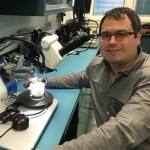 Benoit Gosselin a reçu le doctorat en Génie électrique de l'École Polytechnique de Montréal en 2009 et a effectué un stage postdoctoral à Georgia Tech en 2010. Il est présentement professeur agrégé au Départ. de génie électrique et de génie informatique de l'Université Laval où il dirige le Laboratoire de recherche sur les microsystèmes biomédicaux. Ses intérêts de recherche couvrent les microsystèmes sans fil dédiés aux interfaces cerveau-machine, les circuits intégrés analogiques/mixtes et RF pour la neuro-ingénierie, les circuits d’interface pour les capteurs et les actuateurs implantables et les microsystèmes de diagnostique et de soins mobiles. Le Dr Gosselin est Éditeur associé de la revue IEEE Transactions on Biomedical Circuits and Systems et Président-fondateur du Chapitre IEEE CAS/EMB de Québec (Prix du meilleur nouveau Chapitre IEEE, 2015). Il a siégé sur les comités de plusieurs conférences internationales dont IEEE BIOCAS, IEEE NEWCAS, IEEE EMBC/NER, et IEEE ISCAS, et participe présentement à l’organisation de IEEE ISCAS’16 et IEEE NEWCAS’16. Ses recherches consistent, entre autres, à développer des plateformes microélectroniques innovantes pour observer et étudier le cerveau en temps réel. En plus de récolter plusieurs prix, dont le Prix d’Innovation Mitacs 2015 – Maîtrise et le Prix du meilleur article IEEE BioCAS’15, ses recherches ont mené à la commercialisation de la première plateforme sans fil incorporant l’optogénétique et le monitoring cérébral à grande échèle par la compagnie Doric Lenses. En savoir plus
Benoit Gosselin a reçu le doctorat en Génie électrique de l'École Polytechnique de Montréal en 2009 et a effectué un stage postdoctoral à Georgia Tech en 2010. Il est présentement professeur agrégé au Départ. de génie électrique et de génie informatique de l'Université Laval où il dirige le Laboratoire de recherche sur les microsystèmes biomédicaux. Ses intérêts de recherche couvrent les microsystèmes sans fil dédiés aux interfaces cerveau-machine, les circuits intégrés analogiques/mixtes et RF pour la neuro-ingénierie, les circuits d’interface pour les capteurs et les actuateurs implantables et les microsystèmes de diagnostique et de soins mobiles. Le Dr Gosselin est Éditeur associé de la revue IEEE Transactions on Biomedical Circuits and Systems et Président-fondateur du Chapitre IEEE CAS/EMB de Québec (Prix du meilleur nouveau Chapitre IEEE, 2015). Il a siégé sur les comités de plusieurs conférences internationales dont IEEE BIOCAS, IEEE NEWCAS, IEEE EMBC/NER, et IEEE ISCAS, et participe présentement à l’organisation de IEEE ISCAS’16 et IEEE NEWCAS’16. Ses recherches consistent, entre autres, à développer des plateformes microélectroniques innovantes pour observer et étudier le cerveau en temps réel. En plus de récolter plusieurs prix, dont le Prix d’Innovation Mitacs 2015 – Maîtrise et le Prix du meilleur article IEEE BioCAS’15, ses recherches ont mené à la commercialisation de la première plateforme sans fil incorporant l’optogénétique et le monitoring cérébral à grande échèle par la compagnie Doric Lenses. En savoir plus
Voici une sélection de ses publications dans les dernières années, suivie d’un article représentatif de ses travaux de recherche.
1. E. Porter, H. Bahrami, A. Santorelli, B. Gosselin, L. A. Rusch, and M. Popović, “A Wearable Microwave Antenna Array for Time-Domain Breast Tumor Screening,” IEEE Transactions on Medical Imaging, 2016, PMID: 26780788.
2. S. A. Mirbozorgi, H. Bahrami, M. Sawan, L. Rusch, and B. Gosselin, “A Single-Chip Full-Duplex High Speed Transceiver for Multi-Site Stimulating and Recording Neural Implants,” IEEE Transactions on Biomedical Circuits and Systems, 2015, PMID: 26469635.
3. H. Bahrami, S.A. Mirbozorgi, L. A. Rusch, and B. Gosselin, “Flexible Polarization-Diverse UWB Antennas for Implantable Neural Recording Systems,” IEEE Transactions on Biomedical Circuits and Systems, 2015, PMID: 25794394.
4. G. Gagnon-Turcotte, A. Avakh, R. Ameli, C.-O. Dufresne, Y. LeChasseur, J.-L. Neron, P. Brule Bareil, Paul Fortier, Cyril Bories, Yves De Koninck, and B. Gosselin, “A Wireless Optogenetic Stimulator Headstage with Multichannel Electrophysiological Recording Capability,” Sensors, vol. 15, no. 9, pp. 22776-22797, 2015.
5. H. Bahrami, S.A. Mirbozorgi, L. A. Rusch, and B. Gosselin, “Biological Channel Modeling and Implantable UWB Antenna Design for Neural Recording Systems,” IEEE Transactions on Biomedical Engineering, vol. 62, pp. 88-98, 2014.
6. S. A. Mirbozorgi, H. Bahrami, M. Sawan, and B. Gosselin, “A Smart Multicoil Inductively-coupled Array for Wireless Power Transmission,” IEEE Transactions on Industrial Electronics, vol. 61, pp. 6061–6070, 2014.
7. H. Park, M. Kiani, H.-M. Lee, J. Kim, J. Block, B. Gosselin, and M. Ghovanloo, "A Wireless Magnetoresistive Sensing System for an Intraoral Tongue-Computer Interface," IEEE Transactions on Biomedical Circuits and Systems, vol. 6, pp. 571-585, 2012.
8. B. Gosselin, "Recent Advances in Neural Recording Microsystems," Sensors, vol. 11, pp. 4572-4597, 2011.
TRAVAUX DE RECHERCHE
A Single-Chip Full-Duplex High Speed Transceiver for
Multi-Site Stimulating and Recording Neural Implants
We present a novel, fully-integrated, low-power full-duplex transceiver (FDT) to support high-density and bidirectional neural interfacing applications (high-channel count stimulating and recording) with asymmetric data rates: higher rates are required for recording (uplink signals) than stimulation (downlink signals). The transmitter (TX) and receiver (RX) share a single antenna to reduce implant size and complexity. The TX uses impulse radio ultra-wide band (IR-UWB) based on an edge combining approach, and the RX uses a novel 2.4-GHz on-off keying (OOK) receiver. Proper isolation (>20 dB) between the TX and RX path is implemented 1) by shaping the transmitted pulses to fall within the unregulated UWB spectrum (3.1-7 GHz), and 2) by space-efficient filtering (avoiding a circulator or diplexer) of the downlink OOK spectrum in the RX low-noise amplifier. The UWB 3.1-7 GHz transmitter can use either OOK or binary phase shift keying (BPSK) modulation schemes. The proposed FDT provides dual band 500-Mbps TX uplink data rate and 100 Mbps RX downlink data rate, and it is fully integrated into standard TSMC 0.18-μm CMOS within a total size of 0.8 mm2. The total measured power consumption is 10.4 mW in full duplex mode (5 mW at 100 Mbps for RX, and 5.4 mW at 500 Mbps or 10.8 pJ/bit for TX). Additionally, a 3-coil inductive link along with on-chip power management circuits allows to powering up the implantable transceiver wirelessly by delivering 25 mW extracted from a 13.56-MHz carrier signal, at a total efficiency of 41.6%.
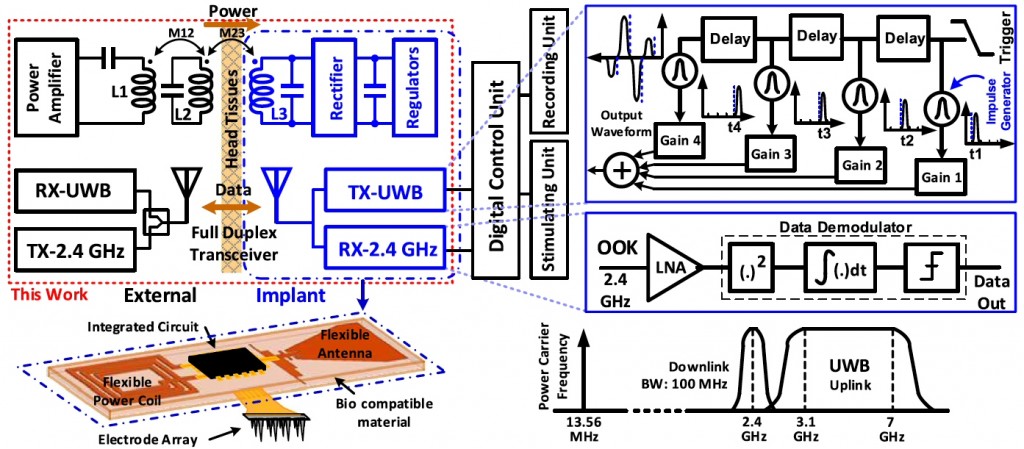
Fig. 1. Block diagram of an implantable neural recording and stimulating device including an inductive power link and the proposed full duplex transceiver.
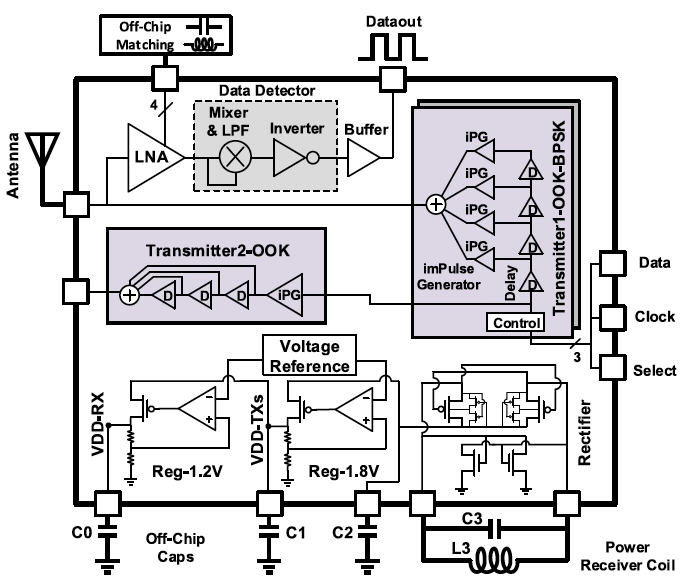
Fig. 2. The integrated circuit building blocks of the proposed implantable wireless interface consists of a new full duplex data transceiver (UWB high data rate transmitter and 2.4 GHz receiver) and a power recovery unit including two voltage regulators (VDD=1.2/1.8V) and a voltage rectifier. The chip includes a versatile OOK/BPSK (Transmitter1) and a compact size simplified OOK transmitter (Transmitter2), which performances are compared throughout the paper.

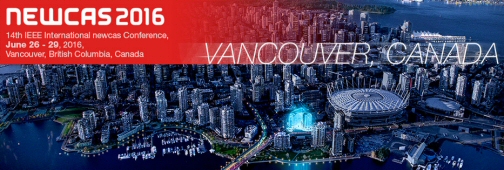
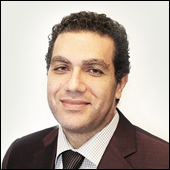



 Benoit Gosselin a reçu le doctorat en Génie électrique de l'École Polytechnique de Montréal en 2009 et a effectué un stage postdoctoral à Georgia Tech en 2010. Il est présentement professeur agrégé au Départ. de génie électrique et de génie informatique de l'Université Laval où il dirige le Laboratoire de recherche sur les microsystèmes biomédicaux. Ses intérêts de recherche couvrent les microsystèmes sans fil dédiés aux interfaces cerveau-machine, les circuits intégrés analogiques/mixtes et RF pour la neuro-ingénierie, les circuits d’interface pour les capteurs et les actuateurs implantables et les microsystèmes de diagnostique et de soins mobiles. Le Dr Gosselin est Éditeur associé de la revue IEEE Transactions on Biomedical Circuits and Systems et Président-fondateur du Chapitre IEEE CAS/EMB de Québec (Prix du meilleur nouveau Chapitre IEEE, 2015). Il a siégé sur les comités de plusieurs conférences internationales dont IEEE BIOCAS, IEEE NEWCAS, IEEE EMBC/NER, et IEEE ISCAS, et participe présentement à l’organisation de IEEE ISCAS’16 et IEEE NEWCAS’16. Ses recherches consistent, entre autres, à développer des plateformes microélectroniques innovantes pour observer et étudier le cerveau en temps réel. En plus de récolter plusieurs prix, dont le Prix d’Innovation Mitacs 2015 – Maîtrise et le Prix du meilleur article IEEE BioCAS’15, ses recherches ont mené à la commercialisation de la première plateforme sans fil incorporant l’optogénétique et le monitoring cérébral à grande échèle par la compagnie Doric Lenses.
Benoit Gosselin a reçu le doctorat en Génie électrique de l'École Polytechnique de Montréal en 2009 et a effectué un stage postdoctoral à Georgia Tech en 2010. Il est présentement professeur agrégé au Départ. de génie électrique et de génie informatique de l'Université Laval où il dirige le Laboratoire de recherche sur les microsystèmes biomédicaux. Ses intérêts de recherche couvrent les microsystèmes sans fil dédiés aux interfaces cerveau-machine, les circuits intégrés analogiques/mixtes et RF pour la neuro-ingénierie, les circuits d’interface pour les capteurs et les actuateurs implantables et les microsystèmes de diagnostique et de soins mobiles. Le Dr Gosselin est Éditeur associé de la revue IEEE Transactions on Biomedical Circuits and Systems et Président-fondateur du Chapitre IEEE CAS/EMB de Québec (Prix du meilleur nouveau Chapitre IEEE, 2015). Il a siégé sur les comités de plusieurs conférences internationales dont IEEE BIOCAS, IEEE NEWCAS, IEEE EMBC/NER, et IEEE ISCAS, et participe présentement à l’organisation de IEEE ISCAS’16 et IEEE NEWCAS’16. Ses recherches consistent, entre autres, à développer des plateformes microélectroniques innovantes pour observer et étudier le cerveau en temps réel. En plus de récolter plusieurs prix, dont le Prix d’Innovation Mitacs 2015 – Maîtrise et le Prix du meilleur article IEEE BioCAS’15, ses recherches ont mené à la commercialisation de la première plateforme sans fil incorporant l’optogénétique et le monitoring cérébral à grande échèle par la compagnie Doric Lenses. 
